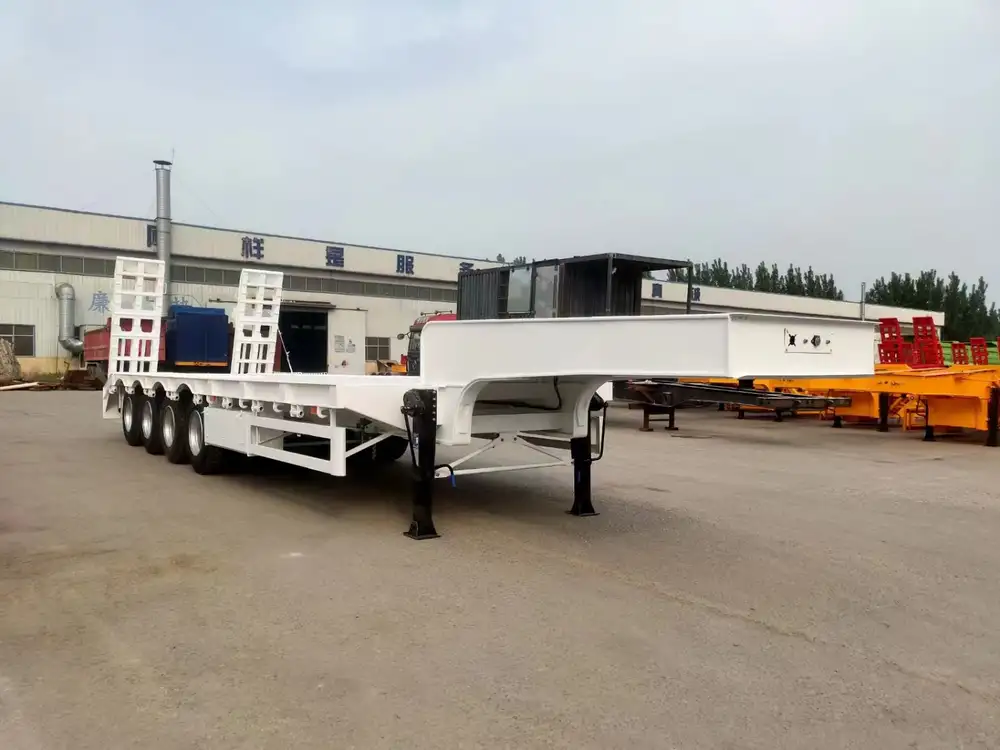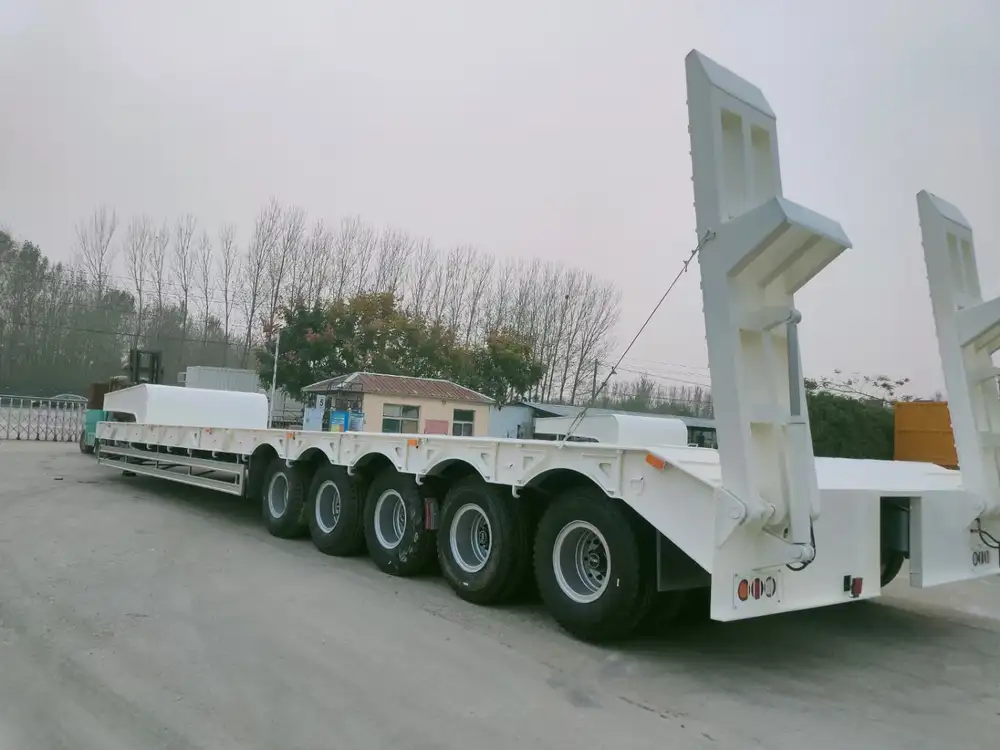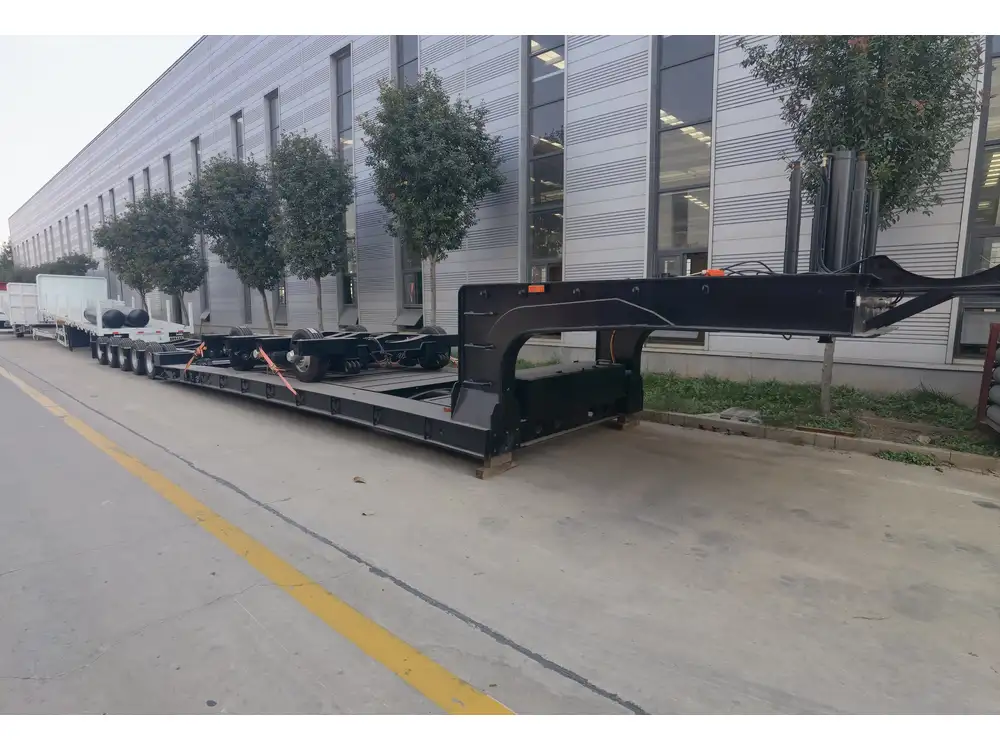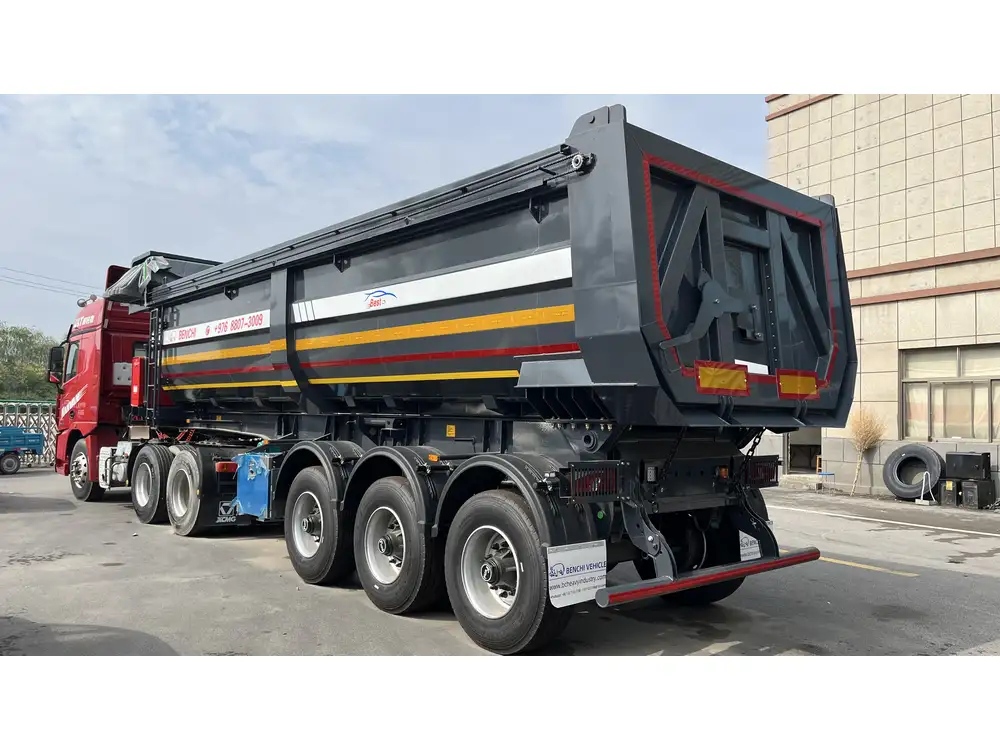When dealing with logistics and transport, understanding the dimensions of semi truck trailers is crucial for compliance, route planning, and vehicle handling. The width of a semi truck trailer directly impacts traffic regulations, loading procedures, and even the safety of your cargo. In this comprehensive guide, we delve into the various dimensions of semi truck trailers, common regulatory guidelines, and provide insights that every operator, fleet manager, and logistics coordinator should know.
Standard Dimensions of Semi Truck Trailers
Width Specifications
The standard width of semi truck trailers varies based on regulatory requirements, the type of cargo carried, and the geographical location of operation. Here’s a breakdown of these considerations:
| Type of Trailer | Typical Width (inches) | Typical Width (meters) |
|---|---|---|
| Standard Flatbed | 96 inches | 2.44 meters |
| Enclosed Dry Van | 102 inches | 2.59 meters |
| Refrigerated Trailer | 102 inches | 2.59 meters |
| Lowboy Trailer | 102 inches | 2.59 meters |

Federal Regulations
In the United States, the Department of Transportation (DOT) mandates specific width regulations for semi truck trailers. These regulations are designed to ensure safe operation on public roads, contributing to roadway safety for both vehicles and pedestrians.
Interstate Highways: The maximum legal width for a semi truck trailer is 102 inches (8.5 feet) across most interstate highways.
State Roads: Many state roads also adhere to the 102-inch standard; however, some states may allow wider trailers under special permits.
Specific Use Trailers: Some specialized trailers, such as those designed for transporting oversized or unusual loads, may have varying width allowances, typically requiring permits to exceed the standard widths.
Measuring Width Correctly
It’s essential to measure the width of a semi truck trailer accurately to ensure compliance. The correct way to measure is from the outermost points of the trailer, typically at the body side walls. Additionally, attention must be given to any accessories or components that extend outward from the trailer, such as fenders or cargo accessories.
Semi Truck Trailer Types and Their Dimensions
Understanding the various types of semi truck trailers is important for logistics optimization and functionality. Each type has its specifications and advantages:

Flatbed Trailers
- Typical Width: 96 to 102 inches
- Usage: Commonly used for loading oversized items, these trailers feature no sides, allowing for easy loading and unloading from any angle.
Dry Van Trailers
- Typical Width: 102 inches
- Usage: These enclosed trailers protect cargo from weather elements, making them suitable for transporting goods such as electronics, furniture, and textiles.
Refrigerated Trailers
- Typical Width: 102 inches
- Usage: Designed for transporting perishables, these trailers maintain specific temperatures, ensuring the freshness and safety of food products and other temperature-sensitive items.

Tanker Trailers
- Typical Width: Generally around 102 inches, but often narrower depending on specific model specifications.
- Usage: Used primarily for transporting liquid goods, handling hazardous materials, and fulfilling specialized transport needs.
Special Considerations for Width Regulations
Oversize Load Permits
When a semi truck trailer exceeds the standard width requirements, securing an oversize load permit is essential. These permits inform local authorities of the transport, allowing for safe routing and necessary escorts.
- Permit Acquisition: Contact your local Department of Transportation or equivalent authority.
- Cost Considerations: Fees can vary depending on the distance, load size, and state regulations.
- Route Planning: Collaborate with your logistics team to determine the safest and most efficient route that complies with width restrictions.

Height Restrictions
While we focus on width, it’s important to note that height and length also play significant roles in determining a trailer’s legal status. Here are the standard height restrictions typically in place:
- Legal Height: 13.5 feet (162 inches) is the maximum height for most states.
- Ensure your loads do not exceed this height, as low bridges and overpasses can pose significant risks.
Factors Influencing Semi Truck Trailer Width
Cargo Type
Different types of cargo may necessitate wider trailers for better support and stability. Equipment, machinery, and large appliances might require specialized flatbeds with greater width allowances.

Road Conditions
Narrow roads or bridges may have restrictions based on the prevailing regulations, which can change by state or municipality. Prior research into local guidelines is vital when planning routes.
Advancements Impacting Trailer Width
Innovative Trailer Designs
The trucking industry continuously evolves, adapting to new technologies and regulations. Here are some innovations influencing trailer dimensions:
- Aerodynamic Designs: Enhancements that reduce drag, contribute to fuel efficiency, and may allow for slightly adjusted designs that maintain compliance.
- Expandable Trailers: Some specialize in producing extendable trailers that can be adjusted based on cargo size, facilitating greater flexibility in operation.

Environmental Considerations
Growing environmental regulations encourage the adoption of eco-friendly trailers. Manufacturers are investing in lighter and more efficient designs, including those that may maximally utilize width without sacrificing structural integrity.
A Closer Look: Common User Questions
What are the Implications of Exceeding Width Regulations?
Exceeding the legal width can lead to:
- Fines and Penalties: Authorities often impose fines for non-compliance, which can accumulate rapidly.
- Safety Risks: Wider than permitted trailers may compromise vehicular safety, increasing the risk of accidents.
- Route Restrictions: Higher likelihood of being restricted from certain routes or locations primarily designed for standard-sized vehicles.

Are There Alternative Trailers Designed for Narrow Applications?
Yes, lowboy trailers and specialized narrow-body trailers are specifically designed for challenging routing scenarios, where width restrictions exist. They maximize width considerations for specific cargo types while remaining compliant with regulations.
How Can Fleet Managers Ensure Compliance with Width Regulations?
Regular training sessions focusing on compliance and logistical planning are critical. Here is a succinct checklist:
- Regularly Review Regulations: Keep abreast of federal and state laws regarding widths.
- Document Load Dimensions: Maintain rigorous records of trailer and cargo dimensions before every trip.
- Continuous Education: Invest in training for drivers regarding compliance and safety practices.
Conclusion: Navigating the World of Semi Truck Trailer Width
Understanding the width of semi truck trailers is not merely an exercise in measurement; it encapsulates an intricate knowledge of regulations, safety considerations, and operational efficiency. By familiarizing oneself with these aspects, operators can enhance compliance, ensure safety, and optimize transport logistics.
Engaging with manufacturers and investigators in the transport sector provides further insights into the nuances of trailer widths, innovations, and emerging technologies that continue to shape this vital industry. Whether you’re a seasoned fleet manager or a newcomer to logistics, mastering these dimensions will lead to improved decision-making, increased safety, and streamlined operations in the complex world of transportation.



